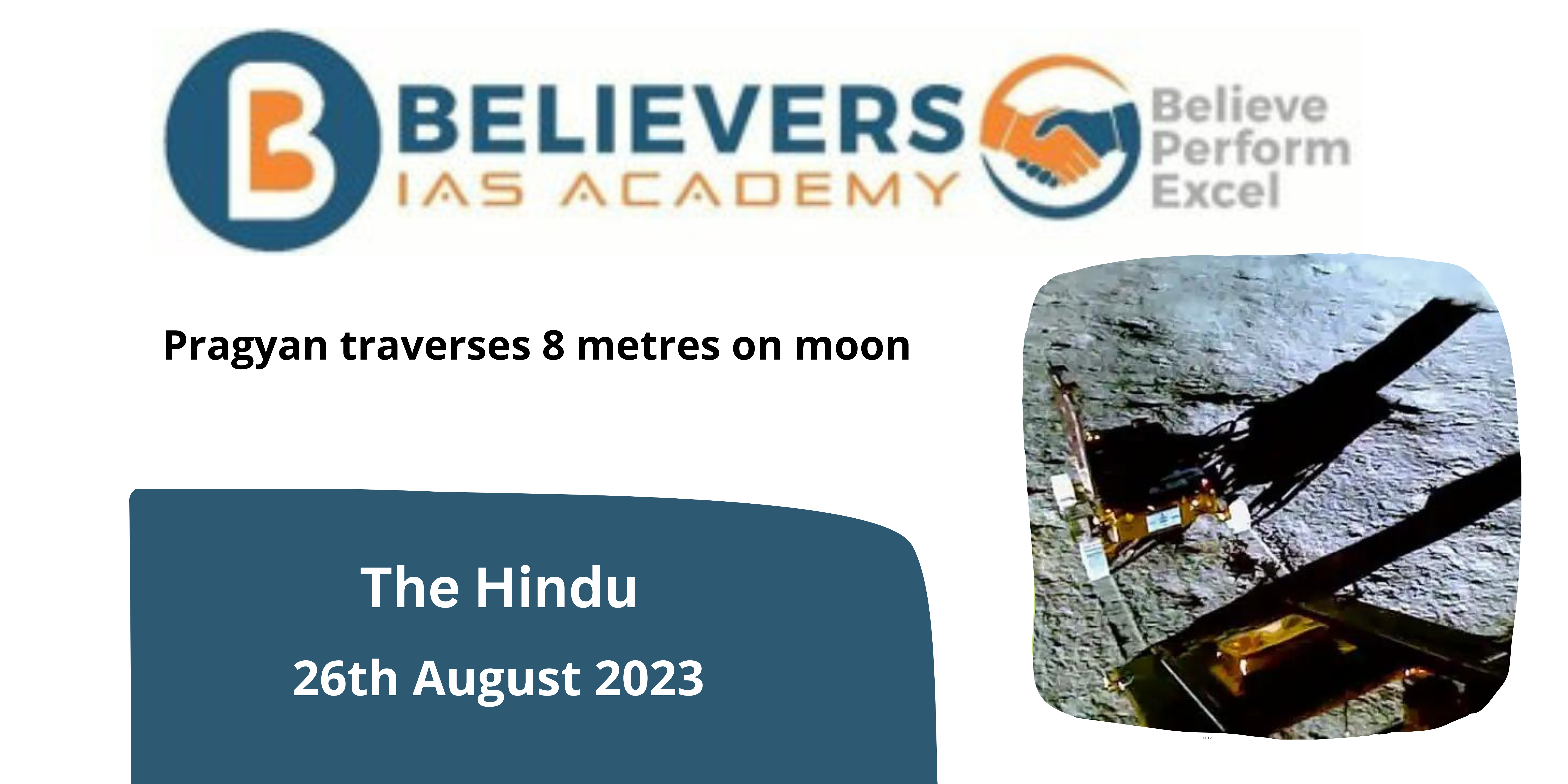Pragyan traverses 8 metres on moon
Context
The Indian Space Research Organisation (ISRO) announced on Friday that Pragyan had successfully travelled about eight meters on the lunar surface, providing a long-awaited glimpse of the rover.
What is Pragyan Rover and the objectives of the rover?
- Pragyan is an Indian lunar rover that forms part of Chandrayaan-3, a lunar mission developed by the Indian Space Research Organisation. With a mission length of one lunar day (14 days on Earth), the lander and the rover include scientific payloads to conduct lunar surface research. The lander includes four payloads to investigate the lunar surface’s seismicity, thermal conductivity, and other features.
- The accomplishment happened two days after the historic soft landing of the Vikram lander close to the South Pole of the moon.
- Two movies of the rover’s motion were taken: the first showed it rolling out of the lander onto the lunar surface, and the second showed the ramp and solar panel being deployed.
- A two-segment ramp made it easier for the rover to manoeuvre, and a solar panel provided power.
- The Laser-Induced Breakdown Spectroscope (LIBS) and Alpha Particle X-ray Spectrometer (APXS), two of Pragyan’s scientific payloads, were activated.
- These payloads seek to ascertain the local area’s elemental composition.
Where did the Vikram Lander land on the moon and what makes the place unique?
- Vikram was able to touch down the closest to the lunar South Pole due to the Chandrayaan-3 mission, despite being on the near side. Chandrayaan-3 is located at 69.36 S and 32.34 E, which puts it 600 kilometres from the South Pole.
What is the difference between the Near Side and the Far Side of the Moon?
- The portion of the moon’s near side that is visible from Earth makes up around 60% of its total surface.
- Due to synchronous rotation, in which the moon’s rotational period matches that of Earth’s orbit, the near side always faces Earth.
- The phrase “dark side” is misleading; during the lunar cycle, darkness can occasionally be found on the far side.
- The far side receives sunlight during the “new moon” phase and is kept bright for almost two weeks.
- Before 1959, when the Soviet spacecraft Luna 3 took pictures and made its topography known, the far side was a mystery.
- Direct views of the far side of the moon were made possible by the Apollo 8 mission in 1968.
- The far side has larger asteroid crash craters, whereas the near side is smoother and has expansive “maria,” or volcanic plains.
- Because the near side’s crust is thinner, craters and plains can be filled with volcanic lava, making them better suited for space missions.
- Chandrayaan-3 is located at a secure landing site with relatively level terrain close to the South Pole.
- China’s Chang’e-4 lander made a successful landing in the Von Karman crater of the South Pole Aitken basin on the opposite side.





